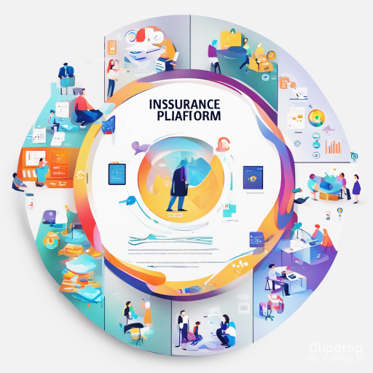The Challenge and Solution: Core System Replacement in Financial Organizations

Is it truly possible to replace a core system in a complex organization? This is a question that every IT manager in insurance companies and financial organizations grapples with. On one hand, the task seems almost impossible. On the other hand, every organization understands that it is inevitable - sooner or later.
The Complex Reality
Each financial organization has a unique technological reality built over the years: different systems, different responsibility boundaries, and customized business processes. But the common problem is clear - legacy systems that have become an Achilles' heel, hindering innovation and making growth and development difficult.
Optimal Working Process - Deep Partnership
A core system replacement process requires a methodical approach. This process begins long before the first line of code is implemented:
Phase 1: Joint Discovery Workshop
Project success begins with deep understanding. Expert teams from both the vendor and client need to work together for comprehensive mapping: Analysis of existing systems and interfaces between them Understanding critical business processes Identifying key "pain points" that the new system needs to solve Mapping unique regulatory and business requirements
Phase 2: Custom Architecture Planning
After understanding the current state, together we plan the optimal architecture: Designing a system architecture that will support the organization's needs for years to come Defining interfaces with adjacent systems that will continue to operate Creating a modular roadmap for gradual implementation Planning a data migration strategy that minimizes risks
Phase 3: Comprehensive Risk Management
Identifying and managing risks is key to success: Comprehensive mapping of potential failure points Building contingency plans and defining "rollback" scenarios Detailed planning of transition phases to minimize impact on ongoing operations Emphasis on business continuity without service disruption
Phase 4: Strategic MVP Development
Rather than trying to replace the entire system at once, it's important to develop an MVP designed to address the most significant risks: Development of an initial module that handles a defined and limited business process Controlled implementation that allows for testing in a real business environment Collecting insights and learning from this initial experience to improve the process moving forward Building a combined team of client personnel and vendor experts who will accompany the entire process
Phase 5: Gradual Expansion and Continuous Adaptation
After the MVP's success, the process continues gradually: Adding additional modules according to the agreed roadmap Controlled data migration in stages Ongoing adjustments based on lessons learned Close support for business teams at every stage
The Ideal System
A modern core system designed to replace existing systems should be characterized by: Architectural flexibility that allows integration with existing systems Ability to operate alongside legacy systems during the transition period Built-in tools for data migration and result comparison Built-in control mechanisms to ensure integrity and consistency in business outcomes Replacing a core system is not just a technological project but also an organizational one that requires sensitivity to the organizational culture and the people who will be working with the system.
Summary
Core system replacement is definitely possible when properly planned and executed. The key is a gradual, risk-based approach that creates small successes on the way to the bigger success. Together with the client, a roadmap should be built, identifying the optimal starting point, and leading a transparent and professional process throughout. The journey to replace a core system is not easy, but with the right system and partner, it is certainly possible and brings significant business value to the organization for many years to come. At Insurtix, we have developed a modular core system specifically designed to address the challenges described in this article. Our system was built from the ground up to enable gradual and controlled replacement of existing systems, while minimizing risks and maintaining business continuity. Our expert teams bring rich experience in leading such complex projects, and we invite you to a discovery conversation about the unique challenges of your organization.